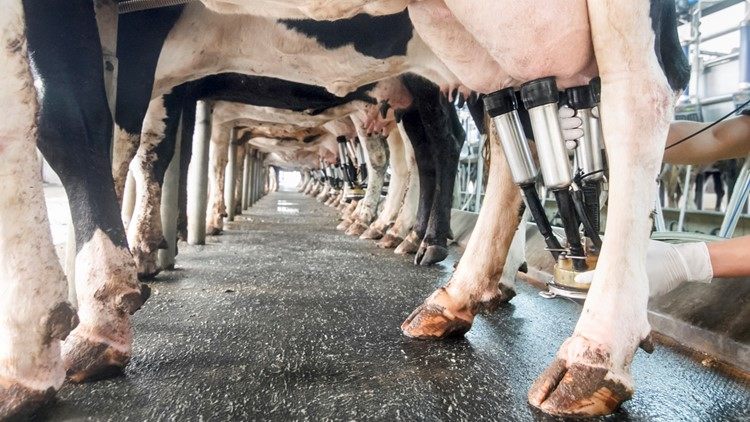
Staci Sexton keeps busy at her dairy farm near Millville.
“My dad, technically, kind of retired this year,” she said. “Mom’s not retirement age yet.”
That means the bulk of the work on her dairy — her parents currently own 60% of the dairy operations on their 300-acre, 127-head dairy, and Staci owns 40% — falls to Staci and her youngest brother, Lance Sexton.
Well, and her mom. And the “neighbor kid.”
And that’s where the trouble looms, Staci Sexton said.
The “neighbor kid,” a high school student who milks the herd on weekend nights, is the lone non-family employee, giving the Sexton clan a night off. “We take a night off, swapping on the weekend, my brother, myself and my parents,” she said.
Before this “neighbor kid” there was another one, Sexton said. When that part-time worker graduated high school, he bequeathed the job to his friend who often tagged along to help out. But when the current “neighbor kid” finishes high school, Sexton doesn’t see another one taking his place, the Post-Bulletin reported.
Caring for the combined herd of her business and her parents’ business — called Schoene Kuh (German for “Beautiful Cow”) and Irish Ridge Dairy, respectively — is really a two-person job, she said. Milking, feeding and caring for upward of 120 cows can be a lot for just one person. Too much, really.
On a short-term basis, Sexton said she can handle the herd on her own. But when she and Lance take over the work completely, they’ll need that person who fills in from time to time to give a little respite when the other one is gone, sick or needs to go to a meeting.
Sexton said she remembers when she was the “neighbor kid.” Her junior and senior years of high school — plus some holidays and summers in college — she worked for Kevin Siewert, who’s Hyde Park Holsteins is just a few miles away near Zumbro Falls.
Siewert, who’s milking herd of 520 is more than four times the size of Sexton’s herd, has eight full-time employees and four part-time employees.
“As you have more cows you have more help and you have to pay people,” Siewert said. “If you’re on your own, you’re on your own.”
With about 200 head to milk, Alan and Bill Miller at Little Red Dairy near Millville employ four part-time workers who help with the daily chores and milking.
Alan Miller recently started making cheese curds, which also involves packaging, distributing and marketing the tasty treats. Some of that work, particularly the marketing, is taken by his wife.
“We’ve been very fortunate with good help,” Miller said, but added, “It’s hard to find a replacement, or someone who just wants to work in general.”
Sexton said she understands the difficulty. Her “neighbor kid,” she said, is responsible and reliable. That, she said, isn’t always the case.
And while she knows the local schools have agriculture programs where they offer some credit for job experience, her farm is “a little far out for those schools.”
“Long term, I guess it’s going to be hard when my parents want to retire,” she said. “I think it’ll be a little tougher, especially in the summer when you want to get crops done and you still have to mix feed or milk cows.”
But for that day-to-day, every week work, she said, the farm just doesn’t need a full-time employee. And, in a way, that’s good.
“It takes us about two hours to milk,” she said, adding that her part-time teen helper has a friend who lives on a larger dairy where the milking takes significantly longer. “He says, ‘I don’t think I could milk for that long.'”
























